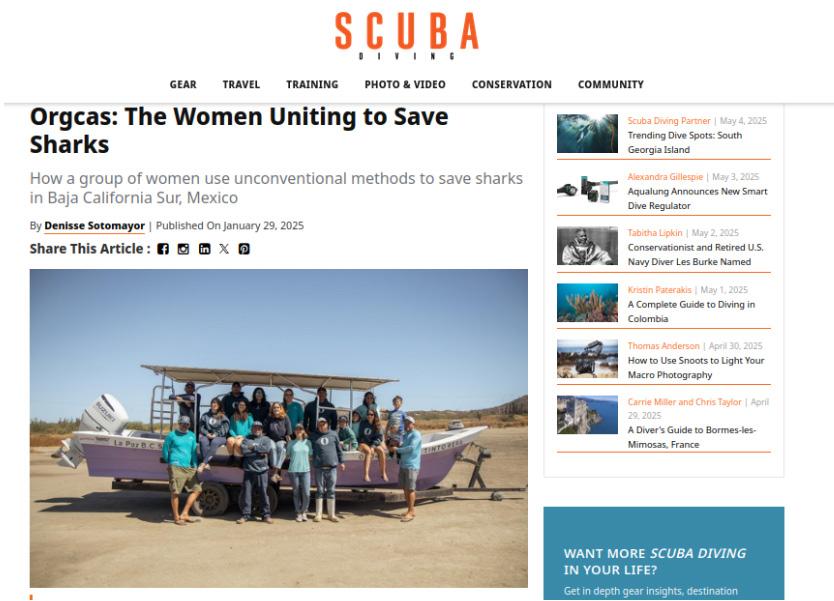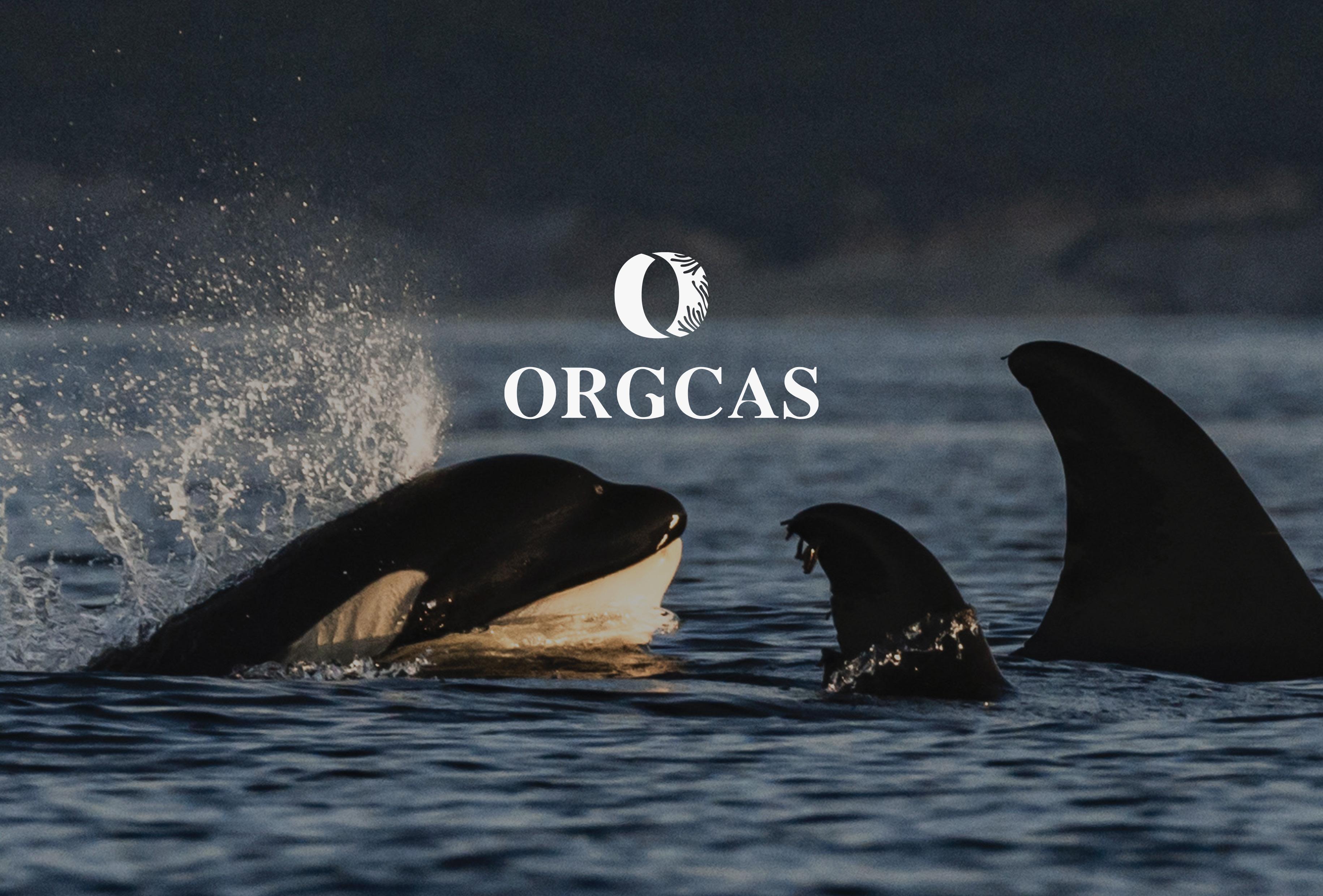
DIRECTION




This quarter, we’re excited to share that Frida Jimena Sánchez Luna has joined our team as the new Environmental Education Coordinator. Frida is a dedicated professional with a strong commitment to marine conservation and science communication, and she comes to strengthen one of the core areas of our organization: educating new generations about the value of our oceans.
With her experience and enthusiasm, we are confident that our educational programs will continue to grow, connecting more communities with knowledge and respect for marine life.
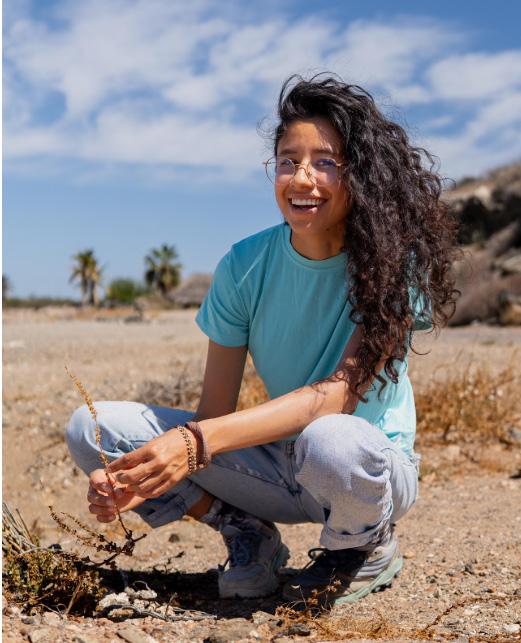

SCIENTIFIC MONITORING AND HABITAT MAPPING
Over the first three years of the project, ORGCAS coordinated scientific monitoring trips focused on mapping critical habitats in the Dos Mares region. Using advanced technology and georeferencing systems, the team successfully identified and characterized key ecosystems, including rocky reefs, sandy bottoms, and underwater seamounts.
This detailed mapping has served as the scientific foundation for defining priority conservation areas and assessing the ecological condition of the region. The data collected has revealed spatial patterns of biodiversity and habitat connectivity—vital information for the development of a management plan for the proposed marine reserve.
As a fundamental part of the research, three field trips were carried out this quarter, during which 9 BRUVS (Baited Remote Underwater Video Stations) were deployed, generating an additional 9 hours of footage. With this, the project has reached a cumulative total of 120 BRUVS stations deployed (Figure 1) and over 100 hours of video. This non-invasive methodology has allowed for the documentation of species composition, their relative abundance, and key ecological behaviors.
Analysis of the recordings revealed the presence of indicator species such as blue sharks, pilot sharks, dolphinfish, yellowfin tuna, among others. In addition, trophic interactions and habitat use patterns were recorded. These findings have been crucial for establishing biodiversity baselines and detecting potential changes in the structure of marine communities over time.
ORGCAS implemented an active science communication strategy, presenting preliminary results to coastal communities, fishing cooperatives, and local authorities through participatory workshops and visual materials. Highlights include "Citizen Science" days, where fishers collaborated in deploying BRUVS
and identifying species, creating a dialogue between traditional knowledge and scientific research. A scientific article has been published that incorporates the local ecological knowledge of fishers.

1. Map of the sites where BRUVS have been deployed.

ORGCAS has developed and submitted a technical proposal to FONMAR (Fund for Sustainable Fishing and Aquaculture) to implement its Purpose-Driven Fishing Plan. This project aims to generate scientific data on key species such as marlin, mahi-mahi, and yellowfin tuna through community-based monitoring, conventional and satellite tagging, and laboratory analysis. The initiative also includes workshops with fishers to promote sustainable practices and the development of a digital platform to centralize fisheries data.

To finance the project's laboratory analyses, ORGCAS submitted a regional proposal to CAF (Development Bank of Latin America), which includes e orts across Colombia, Mexico, Ecuador, Panama, and Costa Rica. These funds would support contaminant and stable isotope analyses in shark and yellowfin tuna tissues, contributing to the assessment of marine ecosystem health. The proposal also seeks to expand the collaboration network with sport fishers and study the genetic connectivity of fish populations—crucial data for fisheries management and conservation.
Progress to date includes the collection of biological samples during artisanal fishing trips and the design of a citizen science system. These e orts align with FONMAR's objectives to promote sustainable fishing, while the CAF proposal would complement the resources needed for more specialized research.
Through this project, ORGCAS strengthens the relationship between science, communities, and public policy. Following the proposal presentation to FONMAR, the funds were approved, enabling evidence-based decision-making for the conservation of species and the long-term economic viability of sport fishing in Baja California Sur, ultimately benefiting both marine ecosystems and the coastal communities that depend on them.


Thanks to previous collaborations, ORGCAS had the opportunity to participate in a science and shark outreach workshop organized by Minorities in Shark Sciences (MISS). From this connection, a new collaboration emerged.
Through MISS, ORGCAS will host interns specialized in the study of elasmobranchs (sharks and rays), bringing innovative perspectives and inclusive approaches to projects like Proyecto Tiburón. The interns will contribute advanced research techniques, while ORGCAS will provide hands-on experience in community-based work and applied marine conservation in Baja California Sur. This partnership expands ORGCAS’s global network, connecting with emerging women scientists and international funding opportunities.

ORGCAS was contacted by Utrecht University in the Netherlands through a recommendation, with the aim of strengthening scientific, community, and marine conservation capacities. As part of the Consultancy Project in Sustainable Development and Water Management (GEO4-2008), a team of master’s students in Sustainable Development and Water Management will collaborate with ORGCAS over a 10-week period (April–June 2025). The project, led by ORGCAS’s Science and Environmental Education teams, will address key challenges such as:
• Analysis of sustainable fisheries policies
• Tools for participatory monitoring of marine species
• Local governance strategies for responsible sport fishing
The students will deliver reports, digital tools, or educational materials that ORGCAS can implement directly in its initiatives. Their specialized work—equivalent to ~1,000 hours—comes at no financial cost to ORGCAS, requiring only a minimal time investment (~12 hours total) for meetings and feedback. The collaboration combines technical expertise with an interdisciplinary approach to enhance ongoing projects. Additional benefits include:
• Applied Innovation: Access to updated academic methodologies and practical products (e.g., data platforms, policy analyses)
• International Visibility: Positions ORGCAS as a reference in collaborative marine conservation, attracting more partnerships and funding
• Community Empowerment: Project outcomes will strengthen local capacities in fisheries management and citizen science
• Define the work plan with MISS for the interns (e.g., shark monitoring, community workshops)
• Manage logistics (permits, data access) to maximize the impact of both collaborations
• Structure the proposal for the Consultancy Project, prioritizing a research question aligned with the Purpose-Driven Fishing Plan (e.g., “How can local participation in satellite tagging be optimized?”)
• This integration of young talent and academic knowledge will allow ORGCAS to scale its conservation impact while strengthening its model of community science and coastal sustainability.
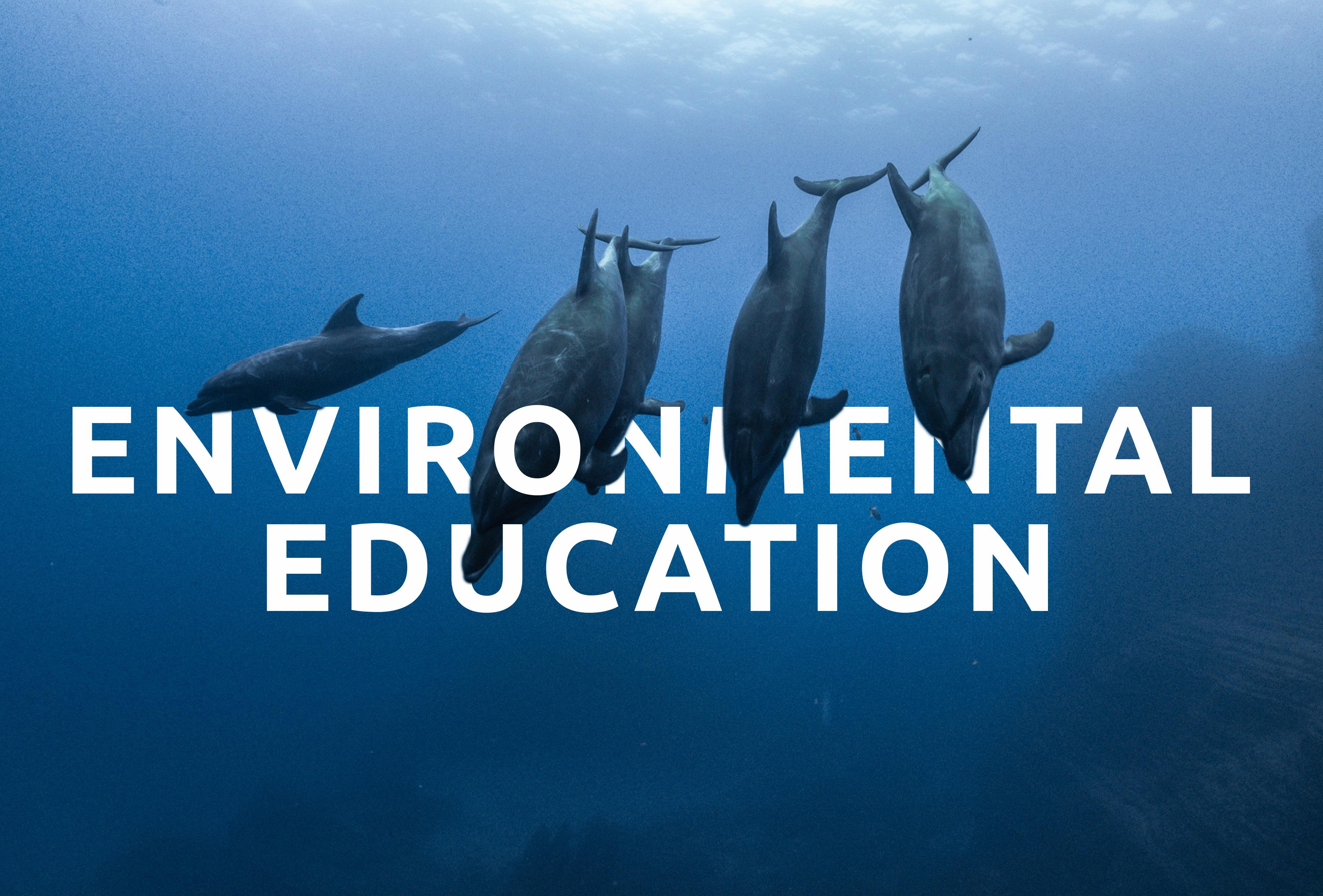
With the goal of generating key information for the conservation of sharks around Cerralvo Island and its surrounding areas, a community-based fisheries data recording system was implemented. To achieve this, the ORGCAS team designed a simple and practical logbook that allows for the documentation of useful data such as the date of the fishing trip, the species caught, whether females are pregnant, and the weight of the specimens, among other relevant information.
The logbook is filled out during fishing trips by a designated fisherman from the community, who records the data from each outing. This information will later be integrated into a digital database that will help improve our understanding of marine biodiversity and support informed decision-making for its protection. This is an important step toward ensuring that fishing in the region can continue over time without compromising ocean health.

As part of internal capacity building, a questionnaire was developed for the ORGCAS team to identify interests, strengths, and areas for improvement in key topics such as community engagement, environmental education, and marine conservation. This tool is part of an ongoing training process aimed at aligning personal and professional goals with the organization’s mission. Based on the responses, future internal training sessions will be planned to strengthen essential knowledge and skills for working e ectively with coastal communities and protecting marine ecosystems.
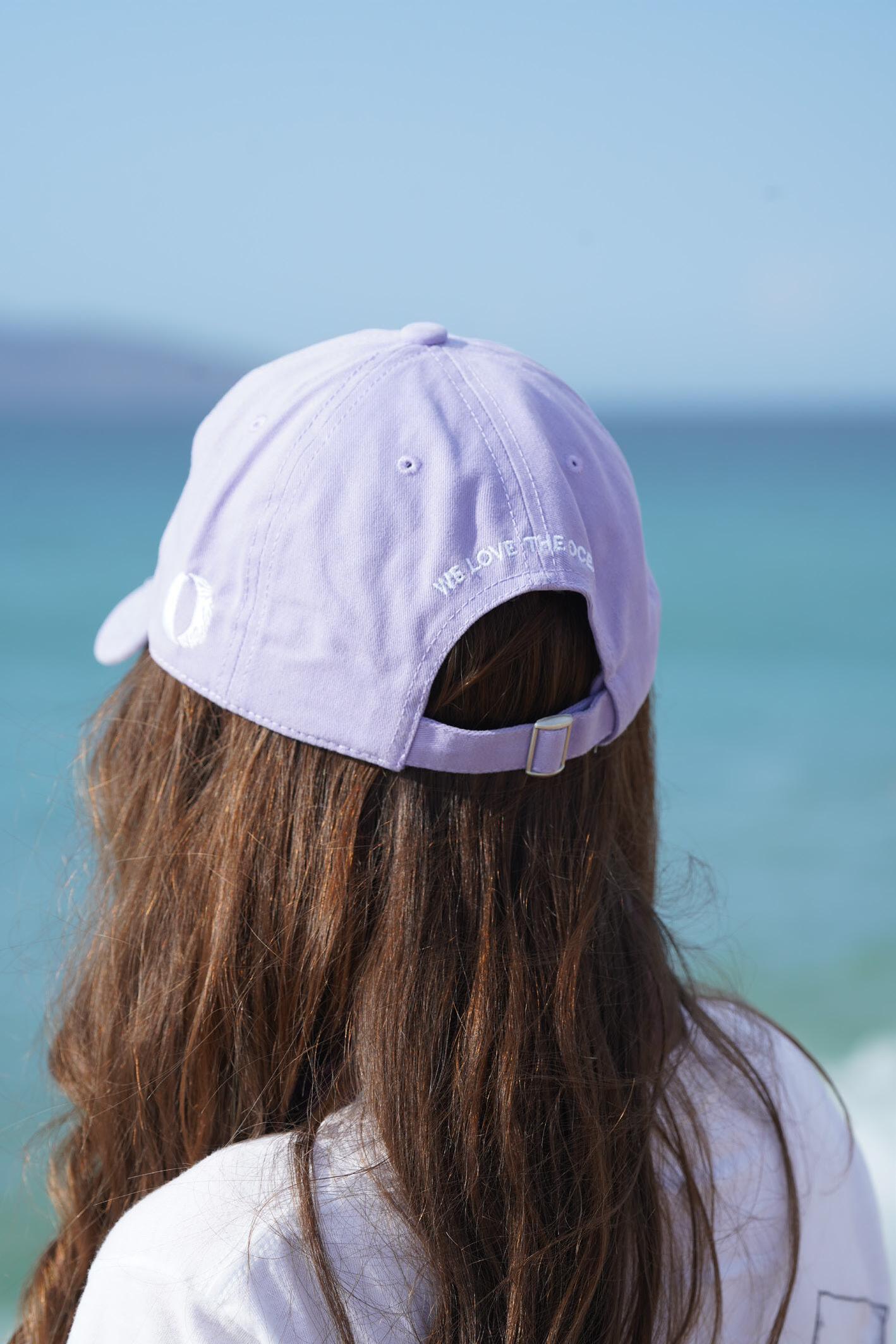
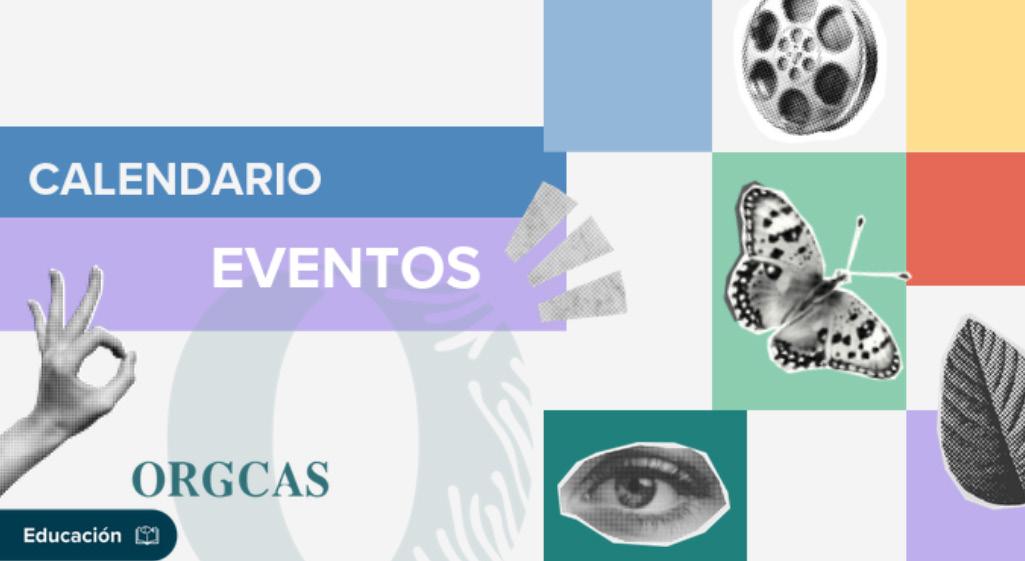
An annual activity plan was developed for children in the Agua Amarga community. This plan aligns with key environmental dates such as Earth Day and Children’s Day (April), the International Day for Biological Diversity (May), Fishermen’s Day, and World Environment Day (June), as well as events focused on the importance of sharks in marine ecosystems.
The activities include boat trips, interpretive walks, documentary screenings, outdoor games, and community dialogue spaces, all aimed at strengthening children’s connection to the marine environment they inhabit.
PARTICIPATION IN
Together with Ciencia y Turismo, we participated in a forum to raise awareness about the threats facing our shared planet. We presented our Purpose-Driven Tourism model, which integrates local communities and respects biodiversity, demonstrating how tourism can be a tool for conservation when planned responsibly.

We had the opportunity to present our Purpose-Driven Tourism model during the forum
The New Arrival of Megacruises to the Gulf of California. On this occasion, we discussed how tourism, when responsibly planned and managed, can become a powerful tool for ocean conservation and a bridge between coastal communities and the preservation of their ecosystems. Our model is based on the conviction that it is possible to create fair and sustainable economic opportunities for those who depend on marine resources, while also protecting the environment. In this way, tourism becomes a means of fostering harmonious coexistence among nature, fishers, their traditions, and visitors.
The mission behind this approach is to demonstrate that enjoying travel does not have to come at the expense of communities or the oceans. By empowering local communities as stewards of their ecosystems, we seek to restore visitors’ relationship with nature and minimize environmental impact.
We are inspired by tourism models that promote regeneration and sustainability,
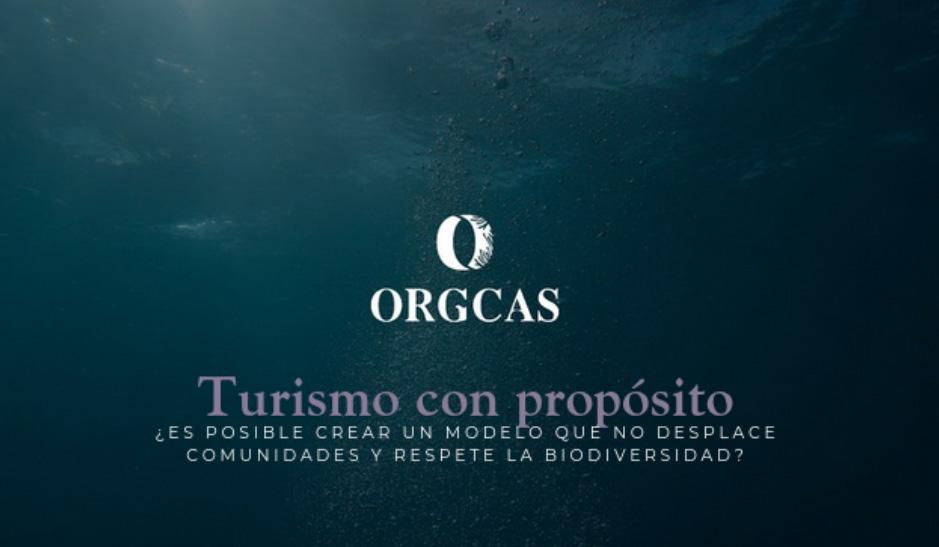

During this period, nine Purpose-Driven Tourism outings were carried out as part of Proyecto Tiburón, in collaboration with local fishers in the region. These experiences were designed to connect visitors with the marine biodiversity of Baja California Sur, with a focus on raising awareness about the ecological importance of sharks. Through observation, dialogue, and direct connection with the sea, the outings promoted responsible tourism that prioritizes ecosystem respect and the generation of fair economic benefits for coastal communities. This model seeks to strengthen the link between marine conservation, local culture, and sustainable development.

This month marked the beginning of a new collaboration with Patagonia México, established within the framework of ORGCAS’s communication and outreach component. As part of this partnership, two stories were developed and submitted: one focused on fly fishing and another on the experience of a local fisher involved in our Proyecto Tiburón. These stories aim to highlight the connection between coastal communities and marine conservation and are scheduled to be published soon through Patagonia’s platforms.
As part of the e ort to strengthen ORGCAS’s communication area, two field outings were coordinated with Arzac, a publicity and marketing agency, for the production of photographic content. These outings, scheduled for early April, aim to document fieldwork and generate visual material that showcases marine conservation actions and the relationship between communities and their environment.
During this period, we participated in an ocean-based awareness event that combined artistic and environmental elements to strengthen the emotional connection to marine ecosystems. The activity featured a live concert accompanied by the songs of humpback whales, in an immersive experience designed to promote the proposed Dos Mares Marine Reserve.
The event, titled Sinfonía Dos Mares, was held in collaboration with Fomares and aimed to raise awareness of the ecological and cultural importance of the waters of Baja California Sur, while also supporting the formal designation of Dos Mares as a protected marine area. The event took place during an exclusive gala in Todos Santos, where music, nature, and conservation came together in a unique experience. It was documented by an audiovisual team for future dissemination and to support broader marine conservation e orts.
This month, ORGCAS’s work was featured in the article “ORGCAS: el proyecto eco encabezado por mujeres que debes conocer en La Paz” published by the digital platform Baja Flavors. The article highlights the women-led nature of the project, as well as the marine conservation, environmental education, and applied science e orts being carried out in the Gulf of California. This coverage helps increase visibility for the community-driven, interdisciplinary, and collaborative work promoted by ORGCAS and represents a valuable opportunity to expand our reach and strengthen communication with new audiences.

Another important highlight this month was the publication of the article “ORGCAS: Women Uniting to Save Sharks” in Scuba Diving magazine. The article emphasizes the role of women in leadership at ORGCAS and showcases our key actions in shark conservation in the Gulf of California. It highlights the impact of our research and conservation e orts, which aim to protect key species like sharks through a scientific, collaborative, and community-based approach. This kind of international media coverage significantly supports our mission and helps expand the visibility and backing of our marine protection initiatives.
